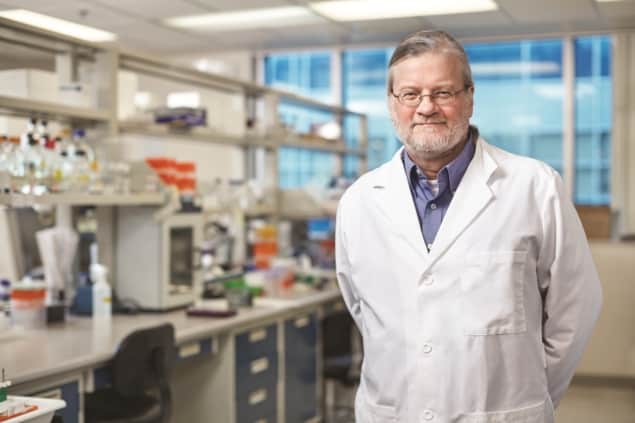Drug-based approach sensitizes hypoxic tumours to radiation therapy
08 Oct 2018
The approved drug papaverine can be used to increase oxygen levels in mouse tumour models — making them more sensitive to radiation therapy and paving the way for similar breakthroughs in human patients, according to a recently published paper (PNAS 10.1073/pnas.1808945115). So, why exactly is such a drug needed? And what were the team’s key findings?
Combating hypoxia
Human tumours often have regions of low oxygen levels (known as hypoxia) because the poorly formed blood vessels cannot deliver enough oxygen to meet the metabolic need of the tumour cells. This is problematic in a clinical setting because it has been known for decades that hypoxia makes cells more resistant to killing by ionizing radiation.
The authors of the paper point out that many strategies have been tried to deliver more oxygen to tumours to make them sensitive to radiation, but that clinical results to date have been disappointing.
In an effort to remedy this situation, Nicholas Denko from the James Cancer Hospital and the Solove Research Institute at The Ohio State University, explains that he and his team screened for drugs that could reduce oxygen consumption in vitro using Seahorse XF technology. They identified a 150 year old drug, known as papaverine or PPV, that had an unrecognized capability to perform this activity.
Papaverine rapidly reduces oxygen consumption in cells by reducing mitochondrial function, the major sink for oxygen in the cell. In order to determine the drugs’ efficacy in model tumours, the team used near infrared spectroscopy to demonstrate that papaverine increased oxygenation in tumours grown in mice within 30–40 min.
“We then tested this drug for efficacy in enhancing radiotherapy in these tumours,” says Denko. “If we give the drug first and radiation thirty minutes later, we see an enhanced effect of the radiation. If we give the drug after radiation, there is no effect, indicating that the drug does something to the tumour to make it more sensitive, which is reducing hypoxia.”
The effect of the drug with radiation resulted in about twice the effect of radiation alone, using the standard tumour regrowth assay. “We used genetics to determine that it really is the effect of the drug on mitochondria that is important,” Denko adds. “We also made derivatives of papaverine that removed its old activity and retained its mitochondrial activity. These new molecules radiosensitize like papaverine, but they may have fewer side effects.”
Approved drug
According to Denko, the new approach could be particularly helpful since, at many tumour sites, the amount of radiation that can be delivered is limited because of the risk of toxicity in nearby normal organs.
“What we are doing is effectively increasing the biologically effective dose to the tumour without increasing the dose to the well oxygenated normal tissue. This should in theory increase tumour cell kill and reduce the likelihood of tumour recurrence,” he explains.
In view of the fact that papaverine is an FDA-approved drug, Denko reports that it can be “rapidly moved into human clinical trials” — and reveals that he and his team have recently received funding to test the safety of adding the drug to radiation therapy for lung cancers. Although radiation therapy can be highly effective for treating some lung cancers, the fact that some tumours are located close to other important organs or blood vessels, means they cannot tolerate the full radiation dose.
“These tumours get a lower dose of radiation, and the fraction of tumours that are controlled is lower. We think that adding a radiosensitizer to this patient population would offer a significant benefit,” says Denko.
Moving forward, Denko predicts that the greatest challenge lies in clinically identifying those patients with very hypoxic — and therefore radioresistant — tumours, that will presumably get the most benefit from adding papaverine.
“In order to try to identify such patients, we have incorporated two strategies in our upcoming clinical trial: blood oxygen level dependent (BOLD) MRI imaging of tumours, and identification of microRNAs from the patient serum that may indicate a hypoxic tumour,” he adds.
Andrew Williams is a freelance journalist based in Cardiff, specializing in science, technology and business.
8/10/2018 from PHYSICSWORLD.COM

Δεν υπάρχουν σχόλια:
Δημοσίευση σχολίου